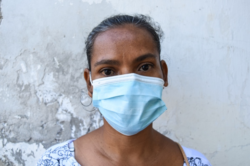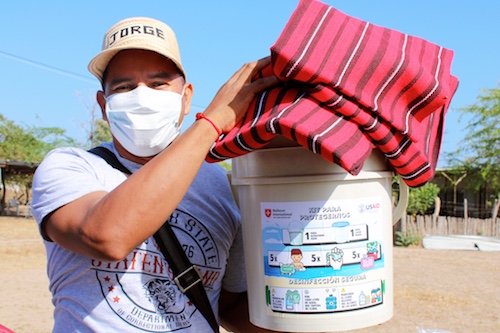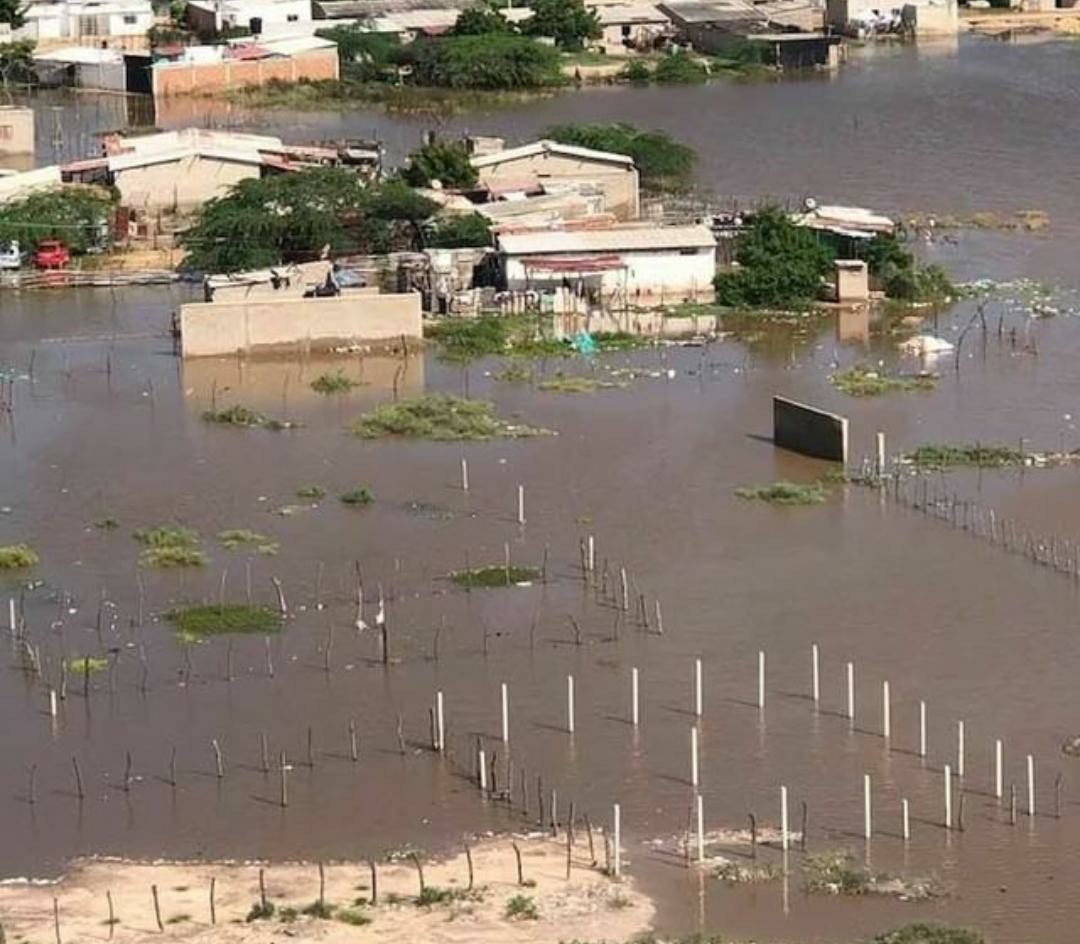Coastal Communities are Facing a Seasonal Threat in Colombia

Late last year, local Colombian news announced that the country would experience an extreme hurricane season, especially in the departments along the northern coast. In mid-November 2020, when Hurricane Iota made landfall as a Category 5 hurricane, major flooding occurred in several communities.
“What do I do if water starts to enter my house?” This was the most recurrent question that haunted thousands of people, especially those from rural areas, where a lack of infrastructure and contingency planning to guarantee access to basic services, like food and water, aggravated the situation by the day.
La Guajira, a department in which indigenous groups (primarily Wayuu) make up 42% of the population, turned out to be the most affected by the hurricane season and tropical storms. Local authorities reported that several municipalities, including Riohacha and Manaure, were in a state of emergency due to the flooding from the Caribbean Sea, rivers, and streams.
The rural areas where many Wayuu have established their settlements were left entirely isolated. These communities saw waters streaming into their homes, killing agricultural crops, livestock, and damaging their belongings.
Data from the Regional Autonomous Corporation of La Guajira (Corpoguajira), the departments’ government entity responsible for the environment, indicated that factors such as the geographical location of the department, the warmer rains characteristic of hurricane season, irregular human settlements next to rivers, and the volatile effects of climate change, put the communities at risk during rainy seasons.
In the region, these events are of particular concern due to how often they’re occurring. In recent years, floods have left thousands of victims, resulting in a loss of food, income and material belongings. In 2020 alone, around 12,000 families were impacted by storms and are still recovering.

Emergency in Riohacha
Riohacha is the capital of La Guajira. With floods recorded throughout the city, the Arriba neighborhood was one of the worst affected after the Rancheria River overflowed – something that hadn’t occurred in several years. The problem was exacerbated by the fact that inhabitants of some areas, in an attempt to stymy the floods, plugged the drains, filling the bodies of water with rubble to gain ground. Part of those affected are poor migrants who – having few housing options – take advantage of the dry season to build their homes in high-risk areas, the only land available to them because they are unregulated areas.
Marquito underwater
The Ranchería River is the most important source of water in this region, supplying an estimated 450,000 people with water through its aquifers and surface waters that are fed by countless streams along the riverbed. But in winter, the river overflows and threatens the population of southern and central La Guajira.
“For days it rained without rest, we feared the worst,” said Jorge Luis Geraldino Epieyu, leader of Marquito, a Wayuu indigenous community located in the rural area of the Manaure municipality, home to 23 families who were affected by the floods. The day Hurricane Iota made landfall on the Colombian coast, the waters in Marquito surpassed one meter, the outlook was devastating, crops were destroyed by the water currents, animals drowned, household goods and appliances were damaged beyond repair.
“Many families had to move to high areas, which came with its own set of risks because wetlands and lagoons become swamps full of insects, mosquitoes and snakes,” says Gerladino. At that time, the increase in the number of respiratory diseases in children and the elderly was prolific and well-known. The situation of the Guajiros (as those from the department are called), and especially that of the Wayuu, became more complex due to the spread of COVID-19. Nobody wanted to take risks

The Ciénaga Grande overflowed
The storm surge caused the overflow of the Ciénaga Grande de Santa Marta, one of the largest coastal wetlands in Latin America. The small municipality of Puebloviejo, a district in the located on a thin strip of land between the Cienega and the Caribbean Sea, was entirely flooded. The strong tides overwhelmed homes and damaged hundreds of households along the coastline.
On Sunday afternoon, the water level of the Cienega’s lagoon began to rise as residents looked on with concern for their homes, mostly built with substandard local materials.
“We live near the shore of the Cienega Grande, almost every year the water rises, with these storms and strong winds. When the water gets to us, we run to pick things up. It is a horrible experience that we do not want to experience again,” says Olinda Vásquez, a resident of the municipality.
Humanitarian aid
MI Americas, with the support of USAID’s Bureau of Humanitarian Assistance (BHA), has been responding to the floods throughout these departments of Colombia, with various modes of assistance.
In total, 800 households have benefitted in the departments of La Guajira and Magdalena, delivering kits for hand-washing and safe water storage, as well as non-food items for shelter and settlement. This distribution is complemented with hygiene promotion at the community level to guarantee an adequate use of supplies, emphasizing the importance of frequent hand washing as a disease prevention measure.

In the case of La Guajira, 600 affected households benefitted from this program: 45 households in the urban area of Riohacha, 272 households located in the townships of Tigreras and Matitas, mixed populations doubly affected (by the floods as well as the on-going armed conflict) in the fluvial zone of the Tapias River, and in 283 households in 11 Wayuu indigenous communities (rancherías) located in the rural area of the principality of Manaure.
In Magdalena, support was given to 200 households in the municipalities of Ciénega and Puebloviejo, populations that were strongly affected by the floods caused by the overflow of the waters of the Caribbean Sea, the Magdalena River, and the Ciénega Grande de Santa Marta.
MI Americas has been working in Colombia since 2014, forging lasting relationships with traditional indigenous authorities, community leaders and authorities in the region. This project in implemented in partnership with local NGOs such as ABIUDEA which provided logistical support, allowing us to reach remote and hard-to-reach communities.


